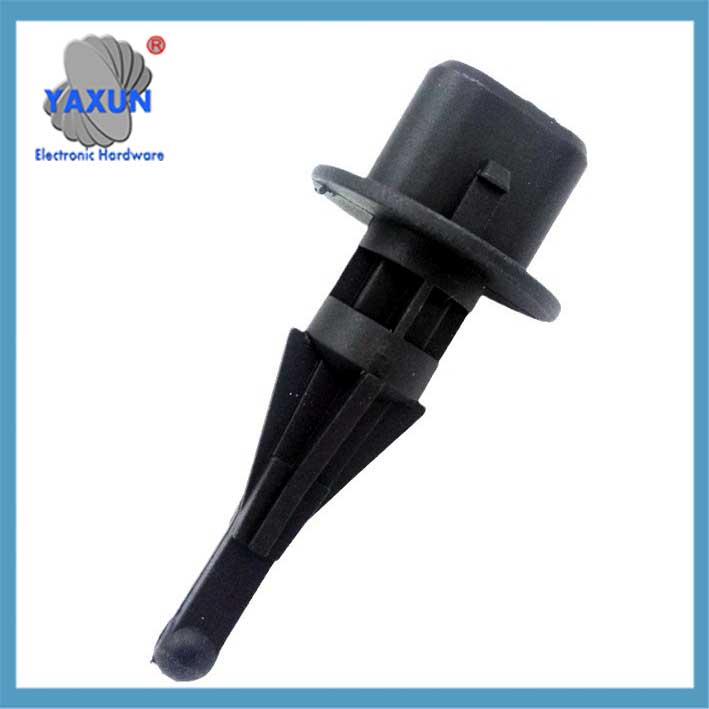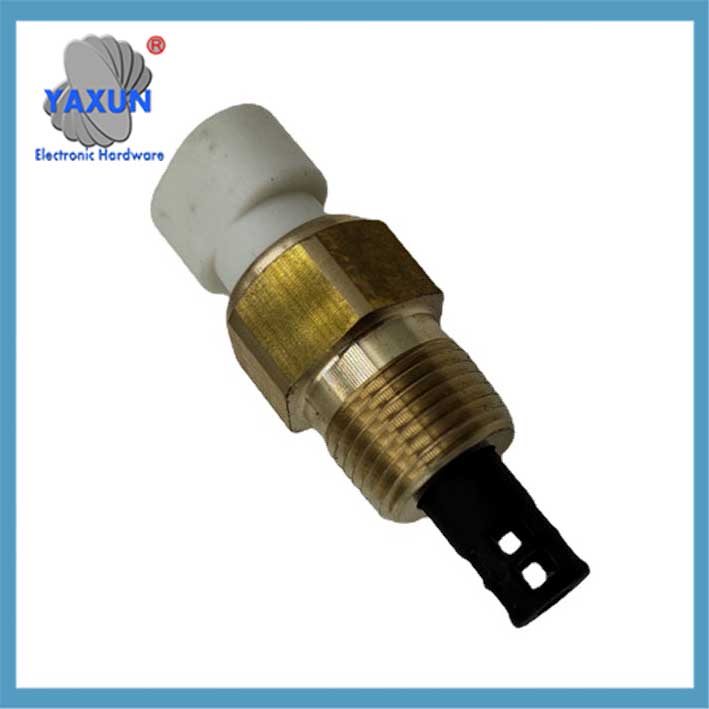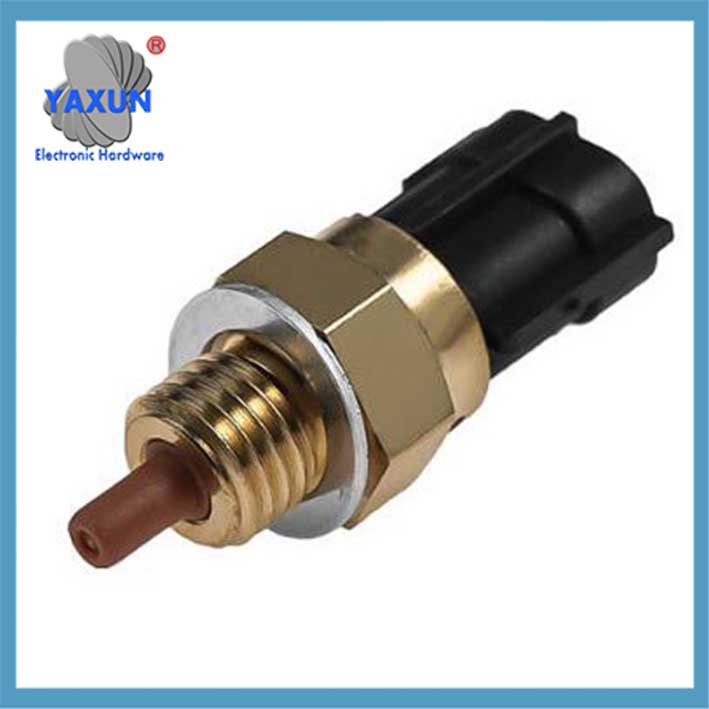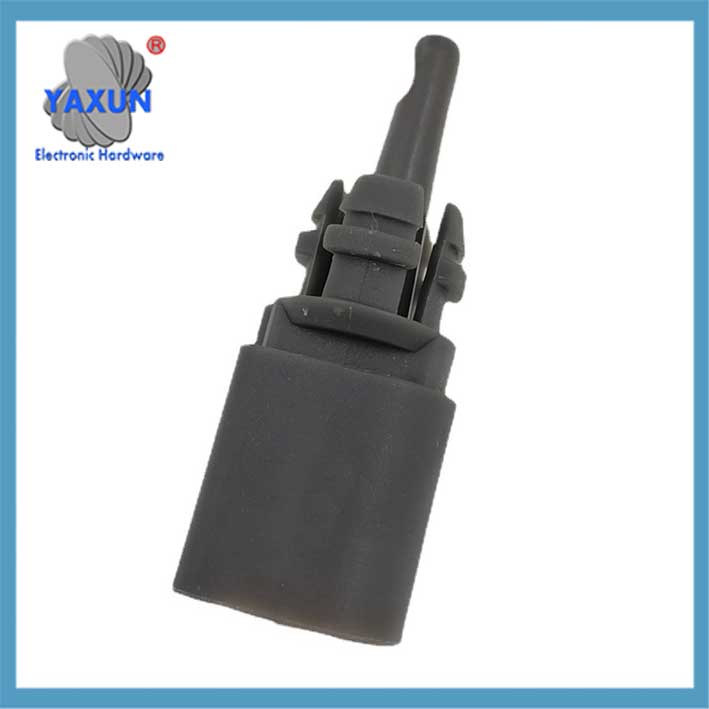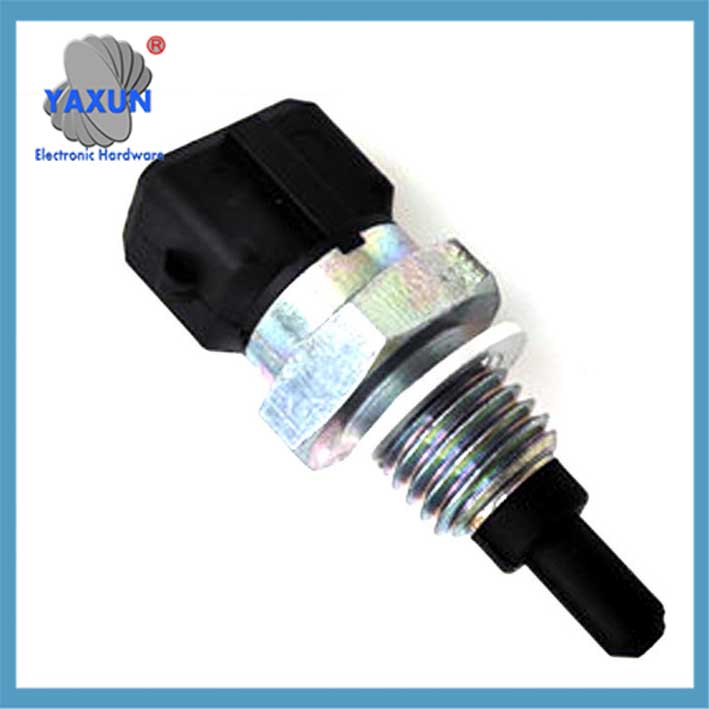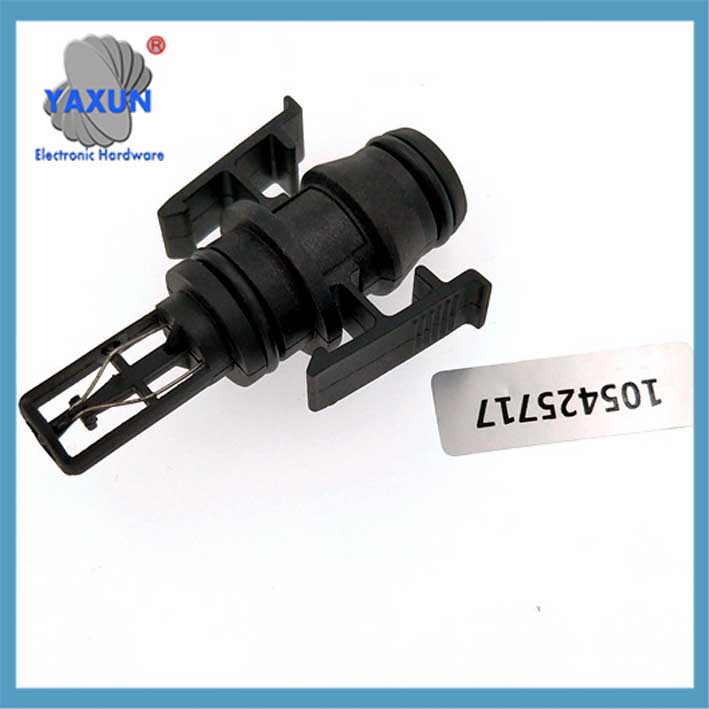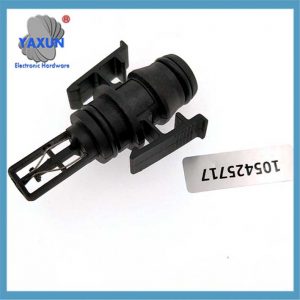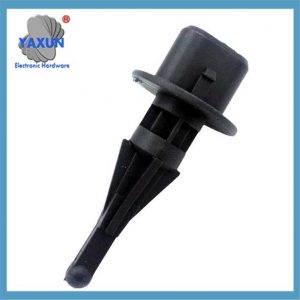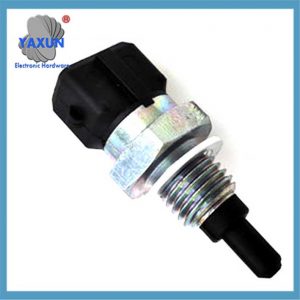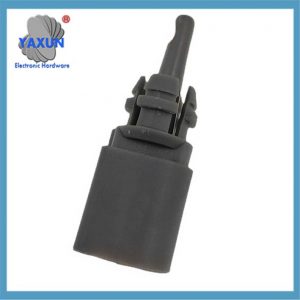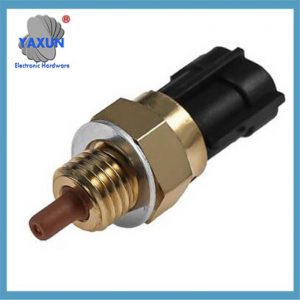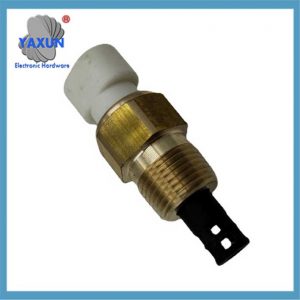Categorías de Producto
- fusible térmico 32
- fusibles de montaje en superficie 12
- termistor 36
- Portafusibles de montaje en PCB 27
- Arnés de cableado 6
- Portafusibles de cuchilla 17
- termostato 50
- Fusible eléctrico 24
- Sensor de temperatura automotriz 7
- Disyuntor térmico 22
- Portafusibles 36
- Sensor de temperatura 75
- Interruptor térmico 68
- Fusible del coche 20
- Fusibles atornillados 8
Etiquetas de productos
Personalice la función del sensor de temperatura del aire de admisión automotriz
Para personalizar la función de temperatura del aire de admisión de un automóvil (IAT) sensor, Puede modificar la salida de señal del sensor a la unidad de control del motor. (ECU). Esto generalmente se logra agregando resistencia en serie o en paralelo con el sensor., alterando efectivamente la señal de voltaje que recibe la ECU. Esto se puede hacer usando un potenciómetro. (resistencia variable) o una resistencia fija. Cambiar la señal IAT puede influir en las decisiones de la ECU con respecto al suministro de combustible y el tiempo de encendido., potencialmente afectando el rendimiento del motor.
Conocimientos relevantes del sensor de temperatura del aire de admisión de automóviles.. Este problema es muy común en el campo del mantenimiento del automóvil y el control electrónico..
Varios puntos clave del sensor de temperatura del aire de admisión del automóvil: Primero, Todos los materiales enfatizan que este es un coeficiente de temperatura negativo. (CNT) sensor termistor, que es la base para entender su principio de funcionamiento. En segundo lugar, Hay dos soluciones principales para la posición de instalación. (antes/después del acelerador), pero las funciones son las mismas. En la sección de síntomas de falla, múltiples fuentes mencionaron repetidamente manifestaciones típicas como arranque difícil y velocidad de ralentí inestable, que deben integrarse para evitar redundancias.
Preste especial atención a la comparación de las diferencias entre los sensores de temperatura de admisión y escape.. Este punto de conocimiento es muy útil para comprender la particularidad del sensor de temperatura del aire de admisión., y considere mencionarlo brevemente. En términos de parámetros técnicos., Se menciona que la diferencia en el voltaje de la señal en condiciones de automóvil frío y caliente es muy valiosa y puede reflejar las características dinámicas de trabajo del sensor..
Prepárese para utilizar una presentación estructurada: Primero describa la definición y los principios básicos., y luego expandirlo en tres partes: flujo de trabajo, función, y culpa.
El sensor de temperatura del aire de admisión (IAT) Es un componente clave en el sistema de gestión del motor.. Se utiliza para controlar la temperatura del aire que ingresa al motor y convertir los datos en señales eléctricas y transmitirlas a la unidad de control electrónico. (ECU) Para lograr una corrección precisa de parámetros como el volumen de inyección y el tiempo de encendido.. Los siguientes son sus puntos centrales.:
I. Principio de funcionamiento y estructura
Componente principal
Adoptar un coeficiente de temperatura negativo (CNT) termistor: El valor de resistencia disminuye cuando la temperatura aumenta., y el valor de resistencia aumenta cuando la temperatura disminuye.
Conversión de la señal
El sensor y la ECU forman un circuito cerrado.. La ECU proporciona un voltaje de referencia de 5 V. (esa línea) y el otro es una línea de tierra (E2). Los cambios de temperatura provocan cambios de resistencia., que a su vez cambia el voltaje del circuito y genera una señal eléctrica correspondiente a la temperatura.
El sensor IAT mide la temperatura del aire que ingresa al colector de admisión del motor..
Esta información es crucial para que la ECU calcule la mezcla de aire y combustible adecuada y el tiempo de encendido para una combustión óptima..
La ECU envía un voltaje al sensor y lee la caída de voltaje a través de él., que corresponde a la temperatura del aire de admisión.
Características de la señal
Estado del coche frio: El voltaje de la señal es similar al del sensor de temperatura del agua.;
Estado del auto caliente: El voltaje de la señal es aproximadamente 2 ~ 3 veces mayor que el del sensor de temperatura del agua..
Ii. Ubicación y función de instalación
Ubicación de la instalación
Ubicado en el tubo de entrada o medidor de flujo de aire., ya sea antes del acelerador (tubo de admisión) o después del acelerador (colector de admisión).
Función principal
Corrección de la relación aire-combustible: El aire a baja temperatura tiene alta densidad., entonces la ECU aumenta la cantidad de inyección de combustible; El aire a alta temperatura tiene baja densidad., por lo que la cantidad de inyección de combustible se reduce para garantizar una eficiencia de combustión óptima.
Prevención de golpes: El aire de entrada a alta temperatura tiende a golpear, por lo que la ECU ajusta el ángulo de avance del encendido en consecuencia.
Protección turbo: Controle la temperatura del aire después de la sobrealimentación para evitar daños por sobrecalentamiento..
Iii. Síntomas de falla y diagnóstico
Fenómenos de falla típicos
comienzo difícil, Velocidad de ralentí inestable, y aceleración débil;
Excesivas emisiones de escape (humo negro);
La luz de falla del motor está encendida.
Causas y efectos de la avería
| Tipo de falla | Rendimiento del flujo de datos | Impacto en la mezcla | causa principal |
|---|---|---|---|
| Mala conexión a tierra | Temperatura anormalmente baja | demasiado rico | El ancho del pulso de inyección aumentó |
| Cortocircuito del sensor | Temperatura anormalmente alta | demasiado delgado | Ancho de pulso de inyección reducido |
| Circuito abierto del sensor | Pérdida de señal | demasiado delgado | La ECU utiliza un valor preestablecido, difícil de empezar |
Método de detección
Detección de resistencia: Retire el sensor, medir el valor de resistencia después del calentamiento (como usar un secador de pelo), y compararlo con el valor estándar;
Detección de voltaje: Cuando el interruptor de encendido está en ON, medir el voltaje entre THA y E2 (aproximadamente 0,5 ~ 3,4 V a temperatura normal).
Iv. Diferencias con otros sensores de temperatura Comparación con el sensor de temperatura de escape
| Parámetros | Sensor de temperatura de admisión | Sensor de temperatura de escape |
|---|---|---|
| Rango de trabajo | -40℃ ~ 150 ℃ | 200℃~1000℃ (aún más alto) |
| Ubicación de instalación | Tubo de entrada/medidor de flujo de aire | Colector de escape/casi convertidor catalítico de tres vías |
| Función principal | Optimizar la relación aire-combustible | Proteger el catalizador, controlar la regeneración del DPF |
| Requisitos de materiales | Embalaje convencional (plástico/resina epoxi) | Carcasa metálica resistente a altas temperaturas. (como acero inoxidable) |
V. Evolución tecnológica e importancia
Como aplicación típica del termistor NTC, este sensor logra retroalimentación de temperatura de alta precisión a través de propiedades físicas simples, lo que afecta directamente la potencia del motor, economía de combustible y nivel de emisiones. Aunque su diseño es pequeño, Es una parte indispensable del moderno sistema de control electrónico para lograr un control de circuito cerrado..
Por qué personalizar la función del sensor IAT?
Ajuste de rendimiento:
Alterar la señal IAT puede ser una forma de ajustar el rendimiento del motor. Por ejemplo, Simular una temperatura del aire de admisión ligeramente más fría a veces puede generar una mezcla de combustible más rica y una mayor potencia., especialmente en motores turboalimentados.
Compensación por Modificaciones:
Si ha modificado su sistema de admisión de aire (P.EJ., cambie el colector de admision, agregó una entrada de aire frío), El sensor IAT puede leer temperaturas diferentes a las del stock.. Personalizar la salida del sensor puede ayudar a compensar estos cambios.
Pruebas y experimentación:
Modificar el sensor IAT puede ser una forma de experimentar con diferentes parámetros del motor y observar los efectos en el rendimiento..
Cómo personalizar:
Agregar resistencia:
En serie: Agregar una resistencia en serie con el sensor IAT aumentará la resistencia general, haciendo que la ECU interprete una temperatura más baja.
En paralelo: Agregar una resistencia en paralelo disminuirá la resistencia general, haciendo que la ECU interprete una temperatura más alta.
Potenciómetro (Resistencia variable):
Un potenciómetro le permite ajustar la resistencia y, por lo tanto, la temperatura del aire de admisión percibida dinámicamente.
Esto es útil para encontrar la configuración óptima para su configuración específica..
Ubicación del sensor:
La ubicación del sensor IAT también puede afectar sus lecturas debido a la absorción de calor.. Considere esto al hacer ajustes.
Calibración de la ECU:
Algunas ECU del mercado de accesorios le permiten calibrar directamente las lecturas del sensor IAT, proporcionando una forma más precisa de personalizar su función.
Contáctenos
Esperando tu email, le responderemos dentro de 12 horas con la valiosa información que necesitabas.
 English
English Afrikaans
Afrikaans العربية
العربية বাংলা
বাংলা bosanski jezik
bosanski jezik Български
Български Català
Català 粤语
粤语 中文(简体)
中文(简体) 中文(漢字)
中文(漢字) Hrvatski
Hrvatski Čeština
Čeština Nederlands
Nederlands Eesti keel
Eesti keel Suomi
Suomi Français
Français Deutsch
Deutsch Ελληνικά
Ελληνικά हिन्दी; हिंदी
हिन्दी; हिंदी Magyar
Magyar Bahasa Indonesia
Bahasa Indonesia Italiano
Italiano 日本語
日本語 한국어
한국어 Latviešu valoda
Latviešu valoda Lietuvių kalba
Lietuvių kalba македонски јазик
македонски јазик Bahasa Melayu
Bahasa Melayu Norsk
Norsk پارسی
پارسی Polski
Polski Português
Português Română
Română Русский
Русский Cрпски језик
Cрпски језик Slovenčina
Slovenčina Slovenščina
Slovenščina Español
Español Svenska
Svenska ภาษาไทย
ภาษาไทย Türkçe
Türkçe Українська
Українська اردو
اردو Tiếng Việt
Tiếng Việt
